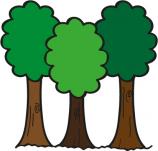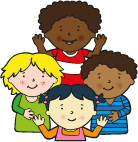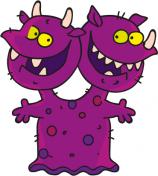Creating Clever Character Descriptions in your KS1 Class
“Mr. Twit was one of these very hairy-faced men. The whole of his face except for his forehead, his eyes and his nose, was covered with thick hair. The stuff even sprouted in revolting tufts out of his nostrils and ear-holes.”
― Roald Dahl, The Twits
A good character description is all about feelings – and not just that of the character themselves, of course.
A well-written character will make the reader feel a whole host of emotions; fondness, sympathy, envy… even hatred, if they’re particularly brilliant in their awfulness (Mr and Mrs Twit are a fine example, of course).
Recognising character descriptions as more than a list of features can be a challenge, especially in primary school classrooms. Many children consider the character description stage as being a bit boring – a tedious piece of admin, if you will, before the excitement of storytelling begins.
By teaching children that building a character is integral to the story itself (and can be just as fun as writing the plot), they’ll soon discover the importance of a well-defined character description – no matter how hairy, smelly, scary or angelic they may be!
Here’s our top five tips to help you on your way.
1. Stay in tune with your senses
 It’s not just about what we see, like clothes and facial features. A good character description makes the most of all our senses.
It’s not just about what we see, like clothes and facial features. A good character description makes the most of all our senses.
For example, a monster that’s been hiding in the airing cupboard could:
- Look sleepy
- Sound very gruff
- Smell like a dusty rag
- Be covered in fur that’s rough to the touch.
They don’t need to use all of their senses (in this case, it might not suit the plot to say what the monster would taste like!), but the children should at least consider them in order to produce an engaging picture of their character.
2. The power of three
 It’s a literacy staple – and the earlier a child can learn it, the sooner their writing can benefit.
It’s a literacy staple – and the earlier a child can learn it, the sooner their writing can benefit.
A key language pattern for persuasion, using three descriptors, packs the ultimate punch, with readers more likely to remember information that’s both simple and rhythmic.
If a monster is ‘big and blue’, why not be ‘big, blue and fuzzy’? It’s almost always more satisfying, as well as creating a clearer picture of the character at hand.
3. Create a word bank
 If you’d like the class to dabble in more creative language when they describe their characters, a word bank could be just the ticket.
If you’d like the class to dabble in more creative language when they describe their characters, a word bank could be just the ticket.
Ideal for an imaginative wall display, a word bank of inventive descriptors will keep the class on task with emotive character building that keeps readers hooked.
4. Get to know your characters across a range of tasks
 Creating a character for just one story may not be enough time to truly understand what makes them tick.
Creating a character for just one story may not be enough time to truly understand what makes them tick.
Once the class have created a character or two, why not introduce them to a range of literacy tasks?
Can the children form a deeper understanding of their characters by writing a letter or a short rhyme in their voice?
5. Write from another character’s perspective
 You know what they say – there’s two sides to every story.
You know what they say – there’s two sides to every story.
Once a protagonist has been written into tale, why not write it again – but from another character’s point of view? Not only will this create a deeper understanding of other characters in the plot, but it will help to solidify our understanding of the original star.
Perhaps the monster in the airing cupboard wasn’t quite as scary as he seemed?
How Can Mighty Writer Help?
If you want to take your pupils' writing skills to the next level, consider using Mighty Writer. This innovative resource is designed to make writing fun and engaging for young learners, while also developing their core literacy skills. With Mighty Writer, your pupils will love writing and you'll love the results!
Want to learn more about the Mighty Writer resource? Download our free Guide by clicking the link below!

